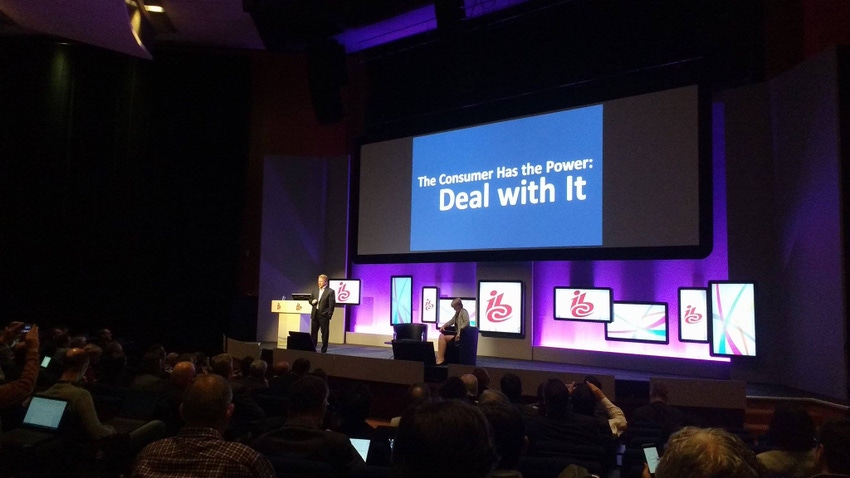Content is King, but the kingdom is bankrupt. That is essentially the message from Fox Network’s Brian Sullivan; we’re not making enough money.
September 15, 2017

Content is King, but the kingdom is bankrupt. That is essentially the message from Fox Network’s COO Brian Sullivan, speaking at IBC 2017: we’re not making enough money.
Now this might sound a bit greedy, but it is a message which has logic to it. How can content providers continue to achieve the ultimate customer experience and deliver on our lust for procrastination when the economics don’t make sense?
“A $10 dollar ecosystem will not support the creation of quality content which the consumer desires,” said Sullivan during the keynote sessions at IBC.
This is the conundrum which the industry is facing; delivering content which meets our demands, but ensuring it can offer such services at a competitive price for the consumer. Disruption from OTTs have put the cost of content at rock-bottom. The equation is not balanced, and this will only lead to disaster for some.
What Sullivan is actually talking about is an overcorrection in the economics of content. And to understand this, you have to look at the entire story.
In the beginning there were only a handful of channels. Your correspondent remembers the days when you only had five channels, but a few other more ‘worldly’ individuals might recall more limited choice. Next came cable and satellite services which offered more choice at a greater cost. Then came the idea of premium bundles, which again offered choice but at a higher price. Then came on demand services, and the introduction of series packages which made it even more expensive. Before you knew it, the consumer was shelling out a ridiculous amount of cash for content on a monthly basis.
At this point the distortion of power was too much in favour of the service providers; there was a feeling the consumer was being taken advantage of. An environment was created which was perfect for disruption. By forgetting why these services were being created, and potentially getting a bit too greedy, the service and content providers opened the door for disruption, and it was certainly taken advantage of.
“Disruption has always been on the cards, “ said Sullivan. “Power started with the consumer and it got distorted over time.”
Enter Netflix.
This was a great idea which was born in another era, which some people might forget. DVD rental services for an affordable monthly subscription only killed off the high street rental companies, but when Netflix underwent its own digital transformation, the threat and disruption was massive. Through creating an excellent customer experience, with a huge amount of content, Netflix offered the consumer choice. And the choice came at less than $10 a month.
The difference here is astronomical. Consumers could go from upwards of $70-80 a month, to $10. And boy did they. It was the beginning of the cord-cutters generation and the entry to the digital economy. The power has swung firmly back into the hands of the consumer, and the traditional content and service providers are having to adapt to an environment where they are chasing the game.
But this is the problem in the eyes of Sullivan. $10 a month works for the consumer, but it doesn’t work for businesses trying to create and provide content. The distortion of power has overcorrected into the hands of the consumer, leading to an unsustainable content economy.
“The old model didn’t work for the consumer, and the new model doesn’t work for the businesses,” said Sullivan.
Now this isn’t an executive just being greedy, it is basic economics. How long can content and service providers continue to operate in this game when they are haemorrhaging cash? If they are to compete with the likes of Netflix, 70-80% of subscription costs need to be shaved from somewhere. Yes, there probably was a need for disruption to lower the cost of content, but this might be seen as an overcorrection. Can the smaller content creators survive when the cheques from the providers are getting smaller and smaller?
A sustainable price will sit somewhere in the middle. And while this might not be something the consumers want to hear, paying more is realistically the only way the industry will become healthy again. Think about it this way; the smaller the cheques, the less content creators who are able to survive. This means less ideas, less content and less competition. Less competition leads to less innovation, and ultimately a poorer experience for the consumer.
“We need to find a balance which is about delivering a service to the consumer which makes sense, but also delivering the economics which supports the ecosystem,” said Sullivan.
Right now the industry is heading down a bad path. Unsustainable economics means the smaller players will drown in the rising tides of debt, while the bigger players can just sit and wait out the storm. Unless the overcorrection is addressed sooner rather than later, the content industry will start to become a lot smaller. Smaller means less choice. Less choice means less competition. Less competition means higher prices.
Maybe a healthy middle ground will be found, or maybe we’re just at the beginning of the distorted cycle all over again.
About the Author(s)
You May Also Like








.png?width=300&auto=webp&quality=80&disable=upscale)


_1.jpg?width=300&auto=webp&quality=80&disable=upscale)


.png?width=800&auto=webp&quality=80&disable=upscale)